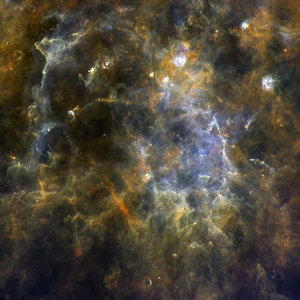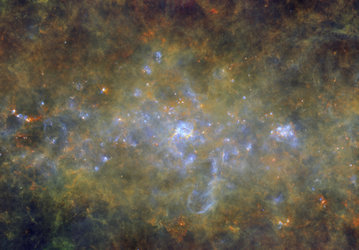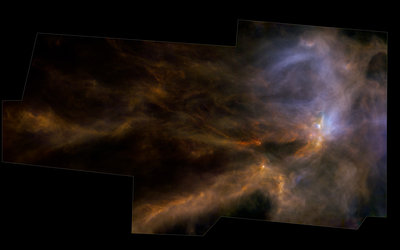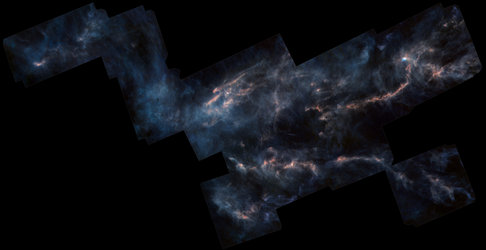
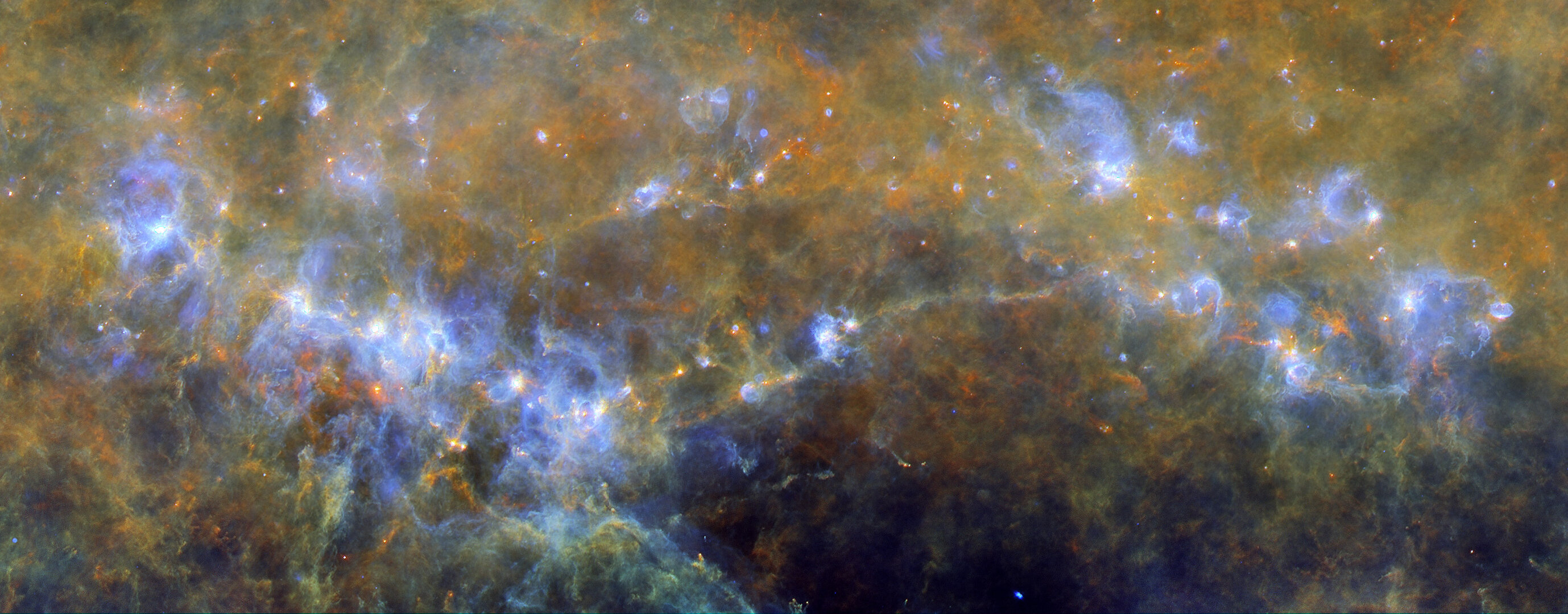
Star formation on filaments in RCW106
Stars are bursting into life all over this image from ESA’s Herschel space observatory. It depicts the giant molecular cloud RCW106, a massive billow of gas and dust almost 12 000 light-years away in the southern constellation of Norma, the Carpenter's Square.
Cosmic dust, a minor but crucial ingredient in the interstellar material that pervades our Milky Way galaxy, shines brightly at infrared wavelengths. By tracing the glow of dust with the infrared eye of Herschel, astronomers can explore stellar nurseries in great detail.
Sprinkled across the image are dense concentrations of the interstellar mixture of gas and dust where stars are being born. The brightest portions, with a blue hue, are being heated by the powerful light from newborn stars within them, while the redder regions are cooler.
The delicate shapes visible throughout the image are the result of radiation and mighty winds from the young stars carving bubbles and other cavities in the surrounding interstellar material.
Out of the various bright, blue regions, the one furthest to the left is known as G333.6-0.2 and is one of the most luminous portions of the infrared sky. It owes its brightness to a stellar cluster, home to at least a dozen young and very bright stars that are heating up the gas and dust around them.
Elongated and thin structures, or filaments, stand out in the tangle of gas and dust, tracing the densest portions of this star-forming cloud. It is largely along these filaments, dotted with many bright, compact cores, that new stars are taking shape.
Launched in 2009, Herschel observed the sky at far-infrared and submillimetre wavelengths for almost four years. Scanning the Milky Way with its infrared eye, Herschel has revealed an enormous number of filamentary structures, highlighting their universal presence throughout the Galaxy and their role as preferred locations for stellar birth.
This three-colour image combines Herschel observations at 70 microns (blue), 160 microns (green) and 250 microns (red), and spans over 1º on the long side; north is up and east to the left. The image was obtained as part of Herschel’s Hi-GAL key-project, which imaged the entire plane of the Milky Way in five different infrared bands. A video panorama compiling all Hi-GAL observations was published in April 2016.

